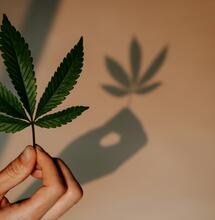The History of Medicinal Cannabis

In Madagascar in 1787, consumption of cannabis became punishable by death, a regressive move that came several centuries after cannabis consumers in Egypt where hashish was commonly eaten – were rumoured to have their teeth pulled out by the order of the Ottoman ruler in what was one of the acts of prohibiting cannabis in History.
However, the benefits of cannabis use have always outweighed the negatives, meaning that any attempted clampdowns have never worked for long. Cannabis is part of ancient Chinese pharmacopoeia, with evidence that suggests cultivation occurred 12,000 years ago.
There are also records from the Assyrians, Greeks, Indian Hindus, and Romans that show that cannabis was used for pain relief, inflammation reduction, mood enhancement and arthritis. As well as to bring relief from malaria, constipation and rheumatism. The Vikings were rumoured to use it for the relief of toothache and to provide respite in childbirth.
In the UK, cannabis was medically acknowledged until the 1930s. In the Tudor era, farmers grew hemp for naval materials such as rope. Queen Victoria's doctor even prescribed the queen herself cannabis oil for relief of menstrual cramps.
It was not long, however, until prohibitions began to emerge regarding recreational use. In South Africa, in the 1870s, cannabis was banned amongst Indian immigrants, in one of the earliest examples of drug laws being used to target migrants. Mexico followed suit in 1920; in 1928, under the UK's Coca Leaves and Indian Hemp Regulations, cannabis was classified as a poison. The US made it illegal for all uses in 1937, which pressured international organisations to follow.
In 1961, the UN deemed cannabis as having "no medical value and hazardous properties", making it a Schedule One drug and meaning that research and medical use were stopped. A former aide of the "war on drugs" architect and ex-US president Richard Nixon, since admitted that "by getting the public to associate the hippies with marijuana and then criminalising both heavily, we could disrupt those communities" amid a campaign against the anti-war left".
However, the anti-cannabis propaganda slowly crumbled as tales of the benefits of using cannabis for severe medical conditions spread. Holland, in the 1970's was one of the first countries to permit medical use of cannabis.
Then, US states, starting with California in 1996, legalised medical use amid increasing indications of the usefulness of cannabis for epilepsy, MS, chronic pain, anorexia and even cancer.
Brazil, Italy, Canada, and dozens of other countries followed soon after. In 2018, the UK followed suit whilst under pressure from two high-profile media campaigns concerning children who were suffering from rare forms of epilepsy that seemed to be eased by cannabis.
Five years later, despite serious barriers, access has slowly opened. However, prescribing numbers are still low due to stigma and lack of education.
More on this topic fromSoft Secrets:



